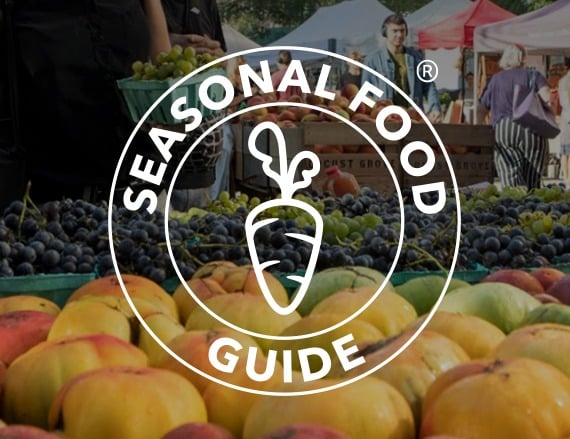Real Food Encyclopedia | Broccoli
While beloved by many, broccoli (Brassica oleracea var. italica) can have a divided reputation. It’s often thought of as a superfood, packed with disease-fighting antioxidants that helps keep the doctor away. But on the other hand, when prepared incorrectly (such as over boiling) it’s taste definitely leaves much to be desired.
Given its nutritional prowess, broccoli deserves better than a pity party, or the cold shoulder. After all, if its cousin kale can get a sexy makeover, why not the tiny trees of the produce aisle? Let the reinvention begin.
Fun facts about broccoli:
- In her book on writing, “Bird by Bird,” author Anne Lamott devotes a chapter to broccoli, using it as a metaphor for listening to your intuition. “You need your broccoli in order to write well,” she argues.
- President George H.W. Bush (George senior) will likely be remembered as this country’s most vociferous critic of broccoli. In 1990, the president banned broccoli from Air Force One and made this emotional display: “And I haven’t liked it since I was a little kid and my mother made me eat it. And I’m President of the United States, and I’m not going to eat any more broccoli!”
- In response, California broccoli farmers sent a reported 10 tons of broccoli to the White House, where broccoli-loving first lady Barbara Bush met the press and announced that most of it would be donated to local food banks. According to the political news site Smart Politics, the president mentioned the dreaded vegetable 70 times during his four-year term.
- When asked to state his favorite vegetable at the second annual Kids State Dinner, President Obama said — you guessed it — broccoli.
What to look for when buying broccoli
Florets should be tightly closed and deep green, with a purplish tinge; avoid limp or yellowing broccoli. Stems should be free of mold or signs of bruising. As hardy as it seems, broccoli is perishable, and discoloration is one of the first signs of decay.
Our advice: Buy the vegetable in its whole form, and whenever possible, from a local source at its seasonal peak. Also, wash it carefully, especially when eating it raw.
Sustainability of broccoli
Among supermarket produce items, conventional broccoli falls on the lower end of the pesticide residue scale. It earned a 21 ranking (out of 46) on the Environmental Working Group’s Shoppers Guide to Pesticides to Produce – a list the EWG created to call out produce with the highest pesticide load.
There have been a few food safety recalls over the past few years but primarily for ready-to-eat products containing broccoli and broccoli sprouts. Most recently, more than 5,000 pounds of broccoli salad kits were recalled for possible listeria contamination.
Seasonality
Although available year-round, broccoli is a cool-weather crop, and like many of its Brassica relatives, does not like extreme heat or cold. It thrives in the fall and spring.
Geography
California and Arizona are the country’s leading broccoli states, with California supplying 90 percent of this country’s haul.
Eating broccoli
Storing
To the best of your ability, keep moisture to a minimum in the refrigerator. Keep broccoli loosely wrapped in a plastic bag or dish towel, and use within a few days. As broccoli ages, it starts to mold and soften.
If you’re racing against time, consider freezing for later. Separate stalks from florets and parboil everything for three minutes, then shock in an ice water bath. Drain well, pat dry and place in freezer bags.
Cooking
Are you a floret fan or a stem person? Most folks fall into either camp, rarely both. That’s because until recently, most of us have prepared whole broccoli spears one of two ways — boiled or steamed — with wet, boring and unevenly cooked results. Stems take longer to cook than florets, so if you’re ever had mushy florets and fibrous stems in one bite, that’s why. So why not separate them?
But in that act of separation, whatever you do, please don’t toss the stems! They’re actually tasty morsels. Peel away the outer, sometimes tough layer, and you’ll find “the meatiest and tastiest part of the vegetable,” according to Marcella Hazan in her book, “Essentials of Classic Italian Cooking.” Peeled stems can be cut into julienne strips or into rounds, then quickly sautéed, or shaved with a vegetable peeler and eaten raw.
One of the tastiest ways to treat whole spears is to put them in the oven. Roasting softens and sweetens the stems, a striking departure from the boiled wet spears of yesteryear.
Rather than a full boil, dip the spears into salted boiling water for a quick 60-second dip, then into ice water to shock and stop cooking. This is a technique called blanching. Be sure to keep the lid off during the quick boil; otherwise, your broccoli will go from emerald green to military brown. Drain, then sauté in a small amount of oil; the fat will facilitate absorption of nutrients and invites flavor opportunities – garlic, ginger, citrus, soy sauce, balsamic vinegar, to name just a few.
Nutrition
Superfood indeed. In the department of food-as-medicine, broccoli is eager to please. One cup of cooked broccoli delivers five grams of fiber, nearly four grams of protein, plus a slew of Vitamins A and C, all at just 55 calories. It contains folate, iron, potassium, omega-3 fatty acids and probably the secret to world peace.
Can broccoli ward off cancer? That’s what researchers continue to ask. Its unique combination of phytonutrients doing anti-inflammatory, antioxidative and detoxifying work has shown tremendous promise in reducing the risk of several types of cancer – breast, bladder, colon, ovarian and prostate.
It’s also being studied for its potential in treating various degenerative conditions, skin damage, stomach ulcers and adult blindness, to name a few.
The bottom line: If you want to give your body a little boost, eat some broccoli.
Top photo by Toting/Adobe Stock.

